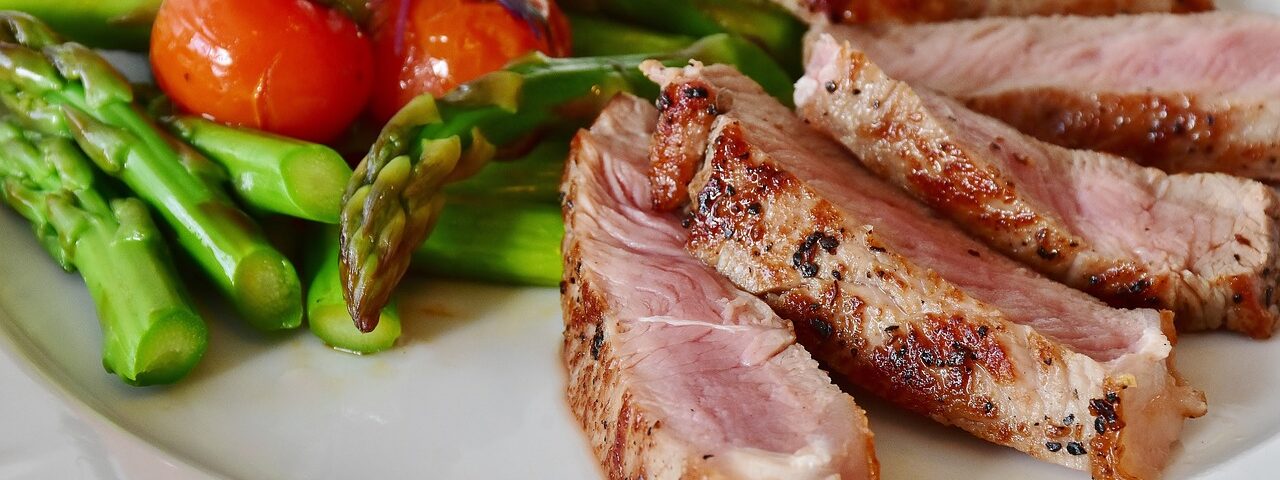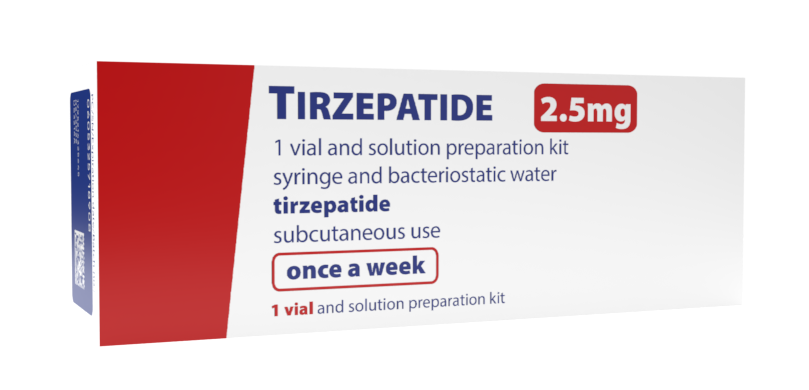Weight loss can seem like an intricate process, but with the right approach it can become a rewarding and achievable journey to a healthier life. The article was written for people who have made decisions to change their figure and get rid of excess weight. Of course, this is an introduction to weight loss, and the information contained herein is a good start to get started.
By focusing on healthy eating habits, regular physical activity and the psychological aspects of weight loss, losing weight can be much easier. Basic information will help you understand what weight loss is all about and how to take off with the transition. Are you ready to change your life? Do you want to finally significantly reduce the size of the clothes you buy? If so, we invite you to continue reading.

1: We're taking off with weight loss
Weight loss is more than physical appearance. We begin the journey by understanding why we want to lose weight, which will effectively sustain our determination to keep going. Whether it's for improved health, increased energy or improved self-esteem, motivation plays a key role. Above all, you must understand that losing weight is linked to providing fewer calories in the diet than we expend on a daily basis. This means that we need to eat less than our body needs. However, this does not mean that we should starve ourselves. Your body also needs a certain amount of energy to be able to sustain a high level of metabolism. Weight loss does not equal starvation. But before you go into details like calculating individual macronutrients to begin with, make the simple changes we've outlined below.
2: Diet - what changes to start with?
The diet does not have to be complicated. Small changes are enough to start with. Introduction to healthy eating is a key step on the way to losing weight and maintaining a healthy lifestyle. This paragraph focuses on building balanced eating habits that will support weight loss and provide the body with the correct approach to nutrition. What rules should we follow?
- 1 Portion Awareness: The first step is to understand proper portion size. We often consume more than our body actually needs. Careful measuring and portion control can help you avoid excessive caloric intake.
- 2. Diversified Diet: A monotonous diet can lead to a lack of essential nutrients. Take care to provide fruits, vegetables, products rich in fiber. From protein sources, e.g. fish, poultry, legumes. As for healthy fats, on the other hand, e.g. avocados, nuts, olive oil.
- 3. Regular Meals: Skipping meals often leads to excessive cravings and compulsive eating later. Try to eat regular meals at even intervals to maintain a steady metabolism and avoid sudden feelings of hunger. Regular meals also prevent excessive blood sugar fluctuations.
- 4 Control of Sweets and Snacks: Limit your intake of processed sweets and snacks, which are often high in empty calories and sugars. If you crave something sweet, reach for fruit or healthy alternatives such as natural yogurt with fruit.
What else is worth knowing?
- 5 - Drink Water: Water is the foundation of a healthy lifestyle. Drink 2.5 to 3 liters of water as a minimum. With physical activity or changing temperatures, the demand also increases.
- 6. limit Salt and Sugar: Too much salt and sugar in your diet can lead to health problems. Read food labels and avoid those that contain excessive amounts of salt and sugar. This will also be safe for the cardiovascular system.
- 7 Cooking Your Own Meals: Cooking on your own allows you to control the ingredients used in your meals. Choose fresh ingredients and avoid prepared foods, which often contain extra preservatives and sugars. Don't be shy about taking containers of food with you.
- 8 Avoid Sweetened Beverages: Sweetened drinks, such as sodas and sugary juices, can provide a lot of empty calories. Instead, reach for water, herbal tea or water with fruit pieces. Drink zero beverages as a last resort.
Implementing healthy eating habits can be a challenge, but remember that small steps lead to big changes. Striving for a balanced diet is the key to achieving and maintaining a healthy weight and feeling good about yourself. You can start with a few guidelines to begin with. There is no need to implement everything at once. Maintaining the above guidelines should already produce small results.

3: Training, does it matter?
Regular physical activity plays a key role in weight loss and the overall health of the body. This paragraph focuses on the benefits of regular exercise and ways to incorporate physical activity into your daily life. What does exercise give us?
- 1. Calorie Burning: Exercise increases the body's energy expenditure, which contributes to the burning of calories. This is important to achieve a negative caloric balance and stimulate weight loss. Workout deepens the caloric deficit.
- 2 Muscle Strengthening: Strength exercises, such as weightlifting and body-weight exercises, help build muscle mass. More muscle means higher levels of calorie burning even at rest. Training also makes your body more resilient.
- 3 Improving Performance: Regular physical activity improves the condition of the heart and respiratory system. It makes us more resilient and gives us more energy to use in our daily lives. Mix strength training with cardio training.
- 4 Stress Reduction: Exercise helps reduce stress levels and improves mental well-being. They affect the secretion of endorphins, or happiness hormones. Exercise is an effort that can give us pleasure.
What other benefits does training have?
- 5 Increasing Mobility: Regular physical activity improves joint flexibility and mobility, which can counteract problems with limited mobility. Supplement strength training with stretching training.
- 6 Healthy Circulatory System: Physical activity strengthens the heart, improves blood circulation and lowers the risk of cardiovascular disease. Cardio training is an excellent way to improve heart function.
- 7 Accelerate Metabolism: Exercise speeds up metabolism, which can help maintain a healthy body weight.
- 8 Support for the Weight Loss Process: The combination of a healthy diet and regular physical activity creates optimal conditions for weight loss. Physical activity can accelerate the rate of weight loss and improve the quality of the results achieved.
Remember that the key to success is to choose a physical activity that you enjoy. This could be walking, jogging, cycling, swimming or weight training. Regularity and commitment are key elements that will contribute to your weight loss and health goals. Choose the workout you enjoy!
4: Fighting Cravings
Cravings and the desire to snack can be a major challenge in the weight loss process. How do you get your diet under control? What tips will help counteract snacking?
- 1 Eat a Healthy Meal: In response to feeling hungry, reach for a healthy meal with the right amount of protein, fiber and healthy fats. Meals rich in nutrients will help keep you feeling satiated for longer. Your diet should be rich in fiber at about 30 grams.
- 2 Avoid Extreme Hunger Games: Extreme calorie restriction can lead to excessive cravings and compulsive eating. Rather, choose a moderate caloric deficit and provide your body with the right amount of energy. The diet should take into account your energy and macronutrient requirements.
- 3 Counteract Emotional Eating: Sometimes we eat not out of hunger, but out of emotion. Recognize your emotions and look for healthier ways to deal with them, such as meditation, walking or journaling.
- 4 Eat Multicomponent Meals: Meals rich in a variety of nutrients help meet the different needs of the body. Try to compose meals with protein, vegetables, carbohydrates and healthy fats.
- 5 Keep the Water With You: Water can help alleviate feelings of hunger. Before reaching for a snack, try drinking a glass of water and wait a few minutes. Sometimes the body mistakes thirst for hunger.
- 6 Find Healthy Snacks: If you really need a snack, reach for healthy options such as nuts, fruit, natural yogurt or carrots. Avoid processed snacks high in sugar and salt.
- 7. Plan Meals and Snacks: Planning your meals and snacks can help you avoid sudden hunger pangs. Prepare healthy snacks and keep them on hand to avoid reaching for unhealthy options.
Remember that controlling cravings and snacking is an important part of the weight loss process. Focus on healthy eating habits and mindful eating to avoid excessive caloric intake and achieve your goals.
Tirzepatide as a way to lose weight
There are remedies on the market that effectively make it easier to stick to a diet, making our weight loss a little easier. Such remedies include. Tirzepatide.
This product effectively curbs appetite, allows you to control cravings. Its action makes dieting enjoyable and weight loss brings faster results. Tirzepatide interacts with specific receptors in the body like GLP-1, which makes you feel full after taking it. Read more about Tirzepatide read on our website.
Weight loss - what should be kept in mind?
- Weight loss requires a negative caloric balance and training.
- The diet should take into account your individual nutritional needs.
- Tirzepatide is an agent that can effectively accelerate the effect of weight loss.
Sources:




2 comments
Comments are closed.